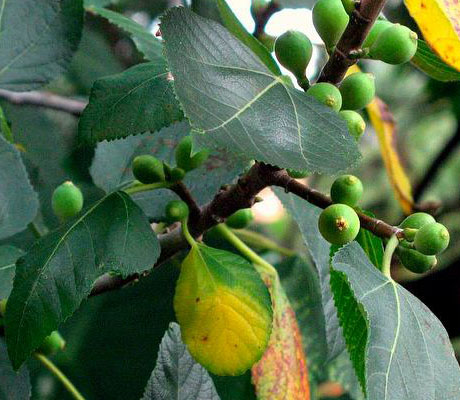 Fig Types; Tree and Fruit Classification
Fig Types; Tree and Fruit ClassificationFig types based on tree and fruit or fig tree classification is our discussion in this article. Types of dried figs will be explained in another article in the future.
Fig tree with the scientific name of Ficus Carica belong to Moracee family and contains over 600 different varieties which most of them are wild and ornamental. Two important ornamental type of figs are Benghalensis and Religiosa where widely used in decorating and houseplant. “Ficus Elastica” which is known as “Rubber Tree or Rubber plant” is decorative and has industrial applications.
Considerable fig varieties in gardening include edible and non edible types. Edible type is known as Ficus Carica botanically. Non-edible type including Ficus Carica Sylvestris is male which is used for pollination of female cultivars. Non-edible type is known as caprifig and produces three crops, including winter crop (Mamme), spring crop (Profichi) and summer crop (Mammon). The spring crop Profichi is used for caprification of edible figs.
Production of edible fig types is vary throughout the year. They may have one or two production stages. In one stage cases, the fruit is harvested in summer and in the figs that have two production stages, the first crop is obtained in the spring or early summer and the second one which is the main crop is harvested in the late summer. Based on cropping and need or lack of need for pollination in order to keep the fruit on the tree, edible fig types are divided into three categories: Common fig, Smyrna (Izmir) and San Pedro types.
The Common fig type has been cultivated since ancient times and grows wild in dry and sunny areas with deep and fresh soil and also in rocky areas. Flowers of common fig tree are all female and create fruits without any need for pollination. Some representative cultivars of common fig types are Kadota, Black Mission, Brown Turkey, Brunswick, Adriatic and Celeste.
Smyrna types are the most important economic types of fig trees, especially in Iran, and are divided into Zidi, Marabout and Sarilop cultivars. Smyrna varieties in Iran are ‘Seyah’, ‘Sabz’, ‘Payves’, ‘Matti’, ‘Shah Anjeer’ and ‘Kashki’. ‘Sabz’ is the main commercial cultivar of Smyrna type in Iran.
San Pedro fig type has two crops in each season which the first is more important and does not require pollination for fruit set while the second crop requires pollination by specific wasp. San Pedro varieties include Desert King, Lampiera and San Pedro figs, which the most popular of them is the King cultivar.
Fig cultivars based on fruit skin color are divided into black, yellow or white. More explanation about fruit characteristics in some commercial figs are in the following:
Adriatic fig:
Skin color of this kind is pale yellowish green and the color of the fruit interior part is red. Dried fruit of Adriatic fig has delicious taste and mostly is used in dried form. This type is less sweet than the other ones.
This type of fig has high water content sweet taste. It is used in both fresh and dry forms.
Calimyrna fig has large fruits with low water content and thick green skin and the fruit interior part is white.
This fig fruit type is very sweet and filled with water and has purple skin. Size of the crop of Celeste fig is small and medium. It is used in both dried and fresh forms.
Kadota fig with medium size and yellow-green fruit has a thick skin. The fruit’s pit is sweet, low seed and white to pink color.
The fruit skin color of this type is black and violet. The fruit tissue is very sweet and chewable and the fruit interior color is red. It is used in both fresh and dried forms.
Desert King with two stage crops is one of the most productive figs in the world. This fig tree produces a very large early crop of figs (about the size of a large egg) in mid-summer which is called the breba crop. The fruit skin color is glaucous and it is delicious and the fruit interior is strawberry-colored.
The fruits begin to ripen from early summer and it continues to late summer so that usually fruit tiny buds, unripe and ripe fruits could be seen simultaneously in the summer.
The email newsletter can auction and special promotions in every moment of our products to be notified.